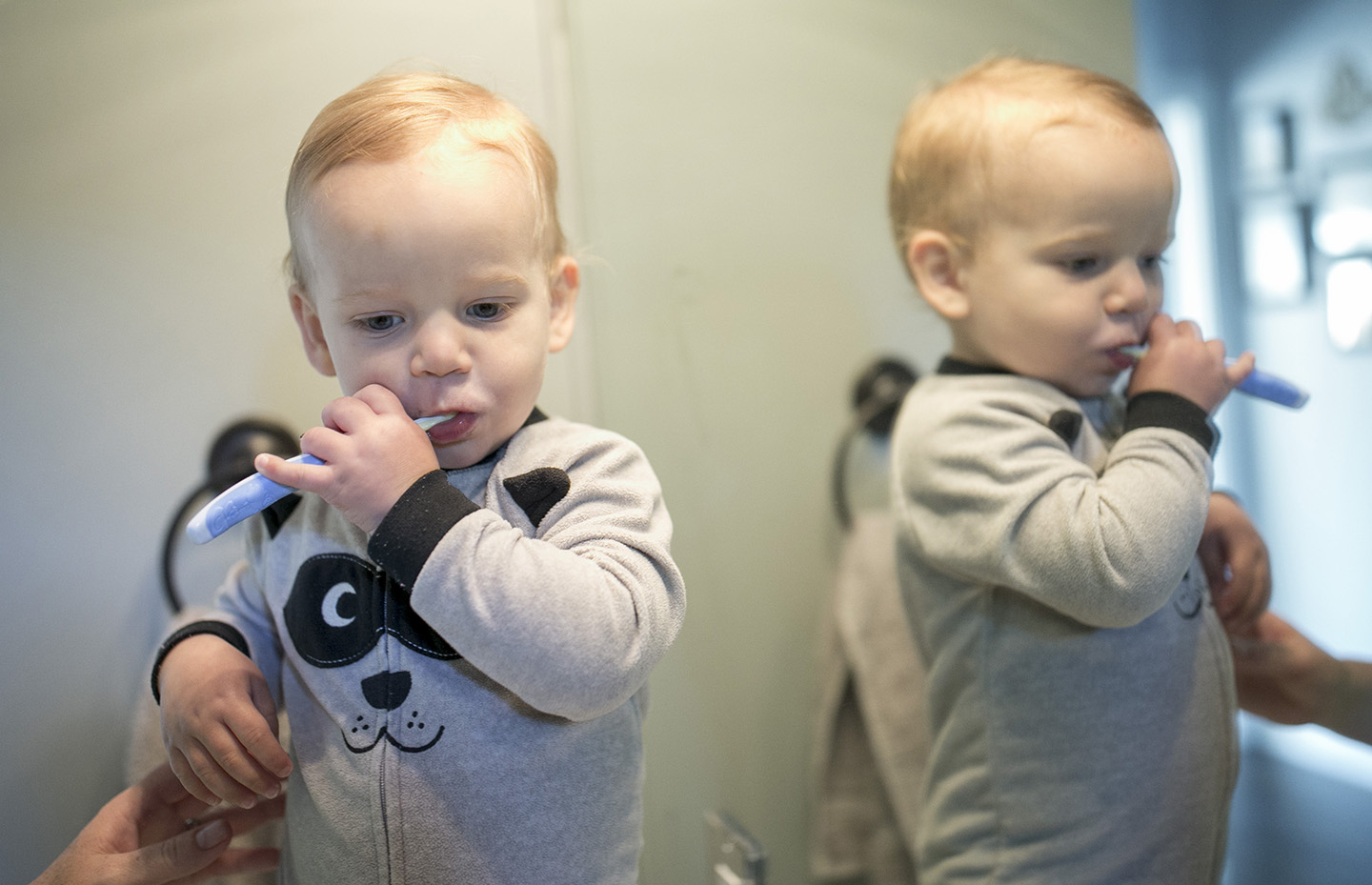Injuries
The signs that foreshadow
grim day care injuries go
unwatched
How Texas misses
signs that could prevent
day care injuries
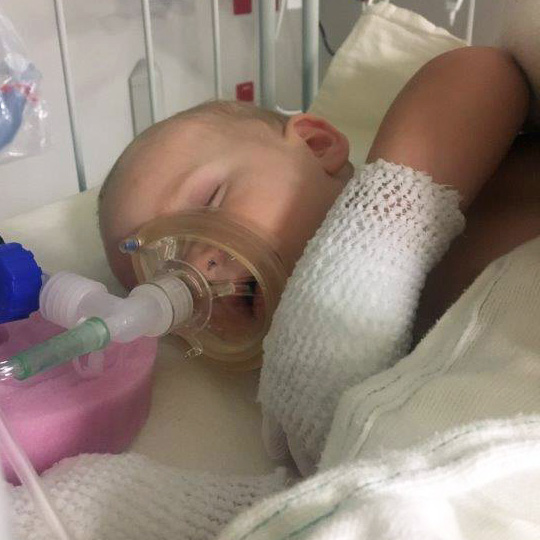
By Andrea Ball, Tony Plohetski and Dan Keemahill
Austin American-Statesman | Dec. 6 2018
Getting hurt is a fact of life in day care.
Children get broken bones, fractures, severe burns, cuts and bruises. They fall down, cut themselves on toys, are bitten by their classmates. Sometimes their caregivers slap, pinch, push or hit them with sticks.
Between October 2016 and July 2018, nearly 5,000 children were injured in Texas child care operations, according to numbers obtained from the state Health and Human Services Commission, which oversees day care. While the majority of those injuries were deemed to be minor, 818 of them were serious injuries, such as head trauma or broken bones.
Child injuries are a key metric when it comes to measuring the safety of day care facilities in Texas. The numbers can influence lawmakers’ funding decisions and help guide parents as they choose day care facilities for their children.
But an American-Statesman investigation shows those numbers — which are based on self-reporting by child care providers and are sent to the federal government — are most likely an undercount. A database created by the newspaper showed that child cares regularly fail to tell both parents and state regulators about injuries, as required by state rules. Oftentimes, injuries are only discovered when parents report them, inspectors notice some documentation during a review of paperwork or other means.
A Statesman analysis of injury data also shows inconsistent categorizing of serious injuries.
“Too many young children are sustaining serious injuries in licensed child care,” said Melanie Rubin, director of the Dallas Early Education Alliance. “We are not talking about typical toddler tumbles and bruised knees. Texas’ minimum standards are not sufficiently meeting their stated purpose of ‘protecting the health, safety, and well-being’ of children in child care.”
The findings are part of the American-Statesman’s yearlong investigation into these and other problems at Texas child care facilities. The newspaper read thousands of documents, researched dozens of day care safety records, analyzed existing data and built its own database to find patterns and trends.
What the Statesman found was that dangerous conditions exist inside many Texas day care facilities, leaving hundreds of children in need of medical care and nearly 90 children dead as a result of abuse or neglect since 2007. In this series, the newspaper explores problems such as day care sexual abuse, deaths, injuries, illegal operations and state oversight. The newspaper also presents potential solutions to some of those problems.
Hampering the state’s effort is that it does little analysis of its injury statistics. Until 2017, the Texas Health and Human Services Commission, which oversees child cares, did not consistently collect or analyze information about all child care injuries. After a new federal grant required states to start gathering more detailed statistics, Texas began doing so in July 2017. State officials say they will use the new data to improve day care quality.
“Our team has been analyzing the year’s data, which is brand new baseline data for us,” said Carrie Williams, spokeswoman for the Health and Human Services Commission. “We are researching what this data can tell us and how we can use it in a concrete way, especially once we have additional years to compare it to.”
But the release of those numbers hasn’t been without complications. When the Statesman first asked for the data, the Commission reported that there had been about 1,000 injuries, 156 serious. Months later, in response to further questions from the Statesman, the state said that it had made a coding error and that the numbers were actually about five times higher.
The figures also show that child cares - which provide the information to the state - are inconsistently characterizing the severity of injuries. Some fractures, for example, were labeled “serious.” Others were not. Some broken bones were seen as serious, others as “non-serious.”
The state child care licensing definition of a serious injury is “any physical injury to a child that requires medical treatment and resulted or may result in impairment to the child's overall health or well-being.”
Children are prone to accidents no matter where they are, especially young ones, whose coordination skills are still developing. According to a 2013 study spearheaded by University of Michigan Medical School researchers, children are no more likely to be hurt in day care than they are in schools or playgrounds.
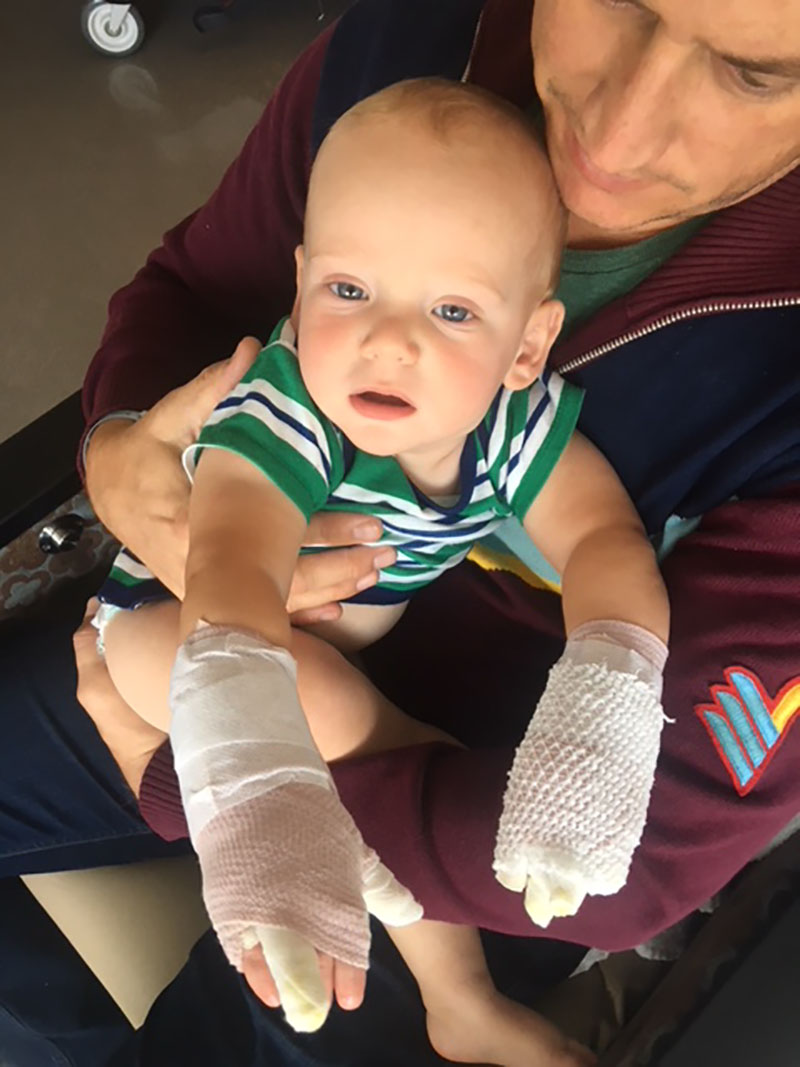
But parents have high expectations for their child care facilities, which are being paid to, at the very least, keep children safe.
“That says to me that there are not enough caregivers in the room,” Stephanie Rubin, chief executive officer of Texans Care for Children, said about the number of injuries. “You have someone diaper-changing and kids are sleeping, eating, playing. If there’s only one caregiver in the room, there’s a much bigger risk of someone being injured.”
“That says to me that there are not enough caregivers in the room,” Stephanie Rubin, chief executive officer of nonprofit Texans Care for Children, said about the number of injuries. “You have someone diaper-changing and kids are sleeping, eating, playing. If there’s only one caregiver in the room, there’s a much bigger risk of someone being injured.”
Traci Mackintosh, former president of the Texas Licensed Child Care Association, said injuries at centers can happen easily, which is why her center in North Texas has two teachers in every classroom, and management is required to ensure that staff is following proper procedures.
Yet in some cases, injuries are caused by those paid to look after them. State statistics show 115 children were injured between October 2016 and July 2018 by caregivers who were disciplining them.
David Brownn, professor of early childhood education at Texas A&M University-Commerce, said such child abuse cases often happen with poorly trained caregivers who don’t understand child behavior. Better-educated caregivers handle stressful situations better.
“They are less likely to commit these kind of offenses,” Brown said.
Even when the state declines to cite caregivers for negligence or abuse, parents say day care facilities sometimes ignore problems that could prevent injuries.
Last year, Austin toddler Aiden McGivney was severely burned after touching an outside door that doctors and investigators estimated had reached 160 to 170 degrees. It was, everyone agrees, not intentional. But Aiden’s parents say the day care facility had plenty of warning that the door was a problem and that their son’s injury could have been prevented.
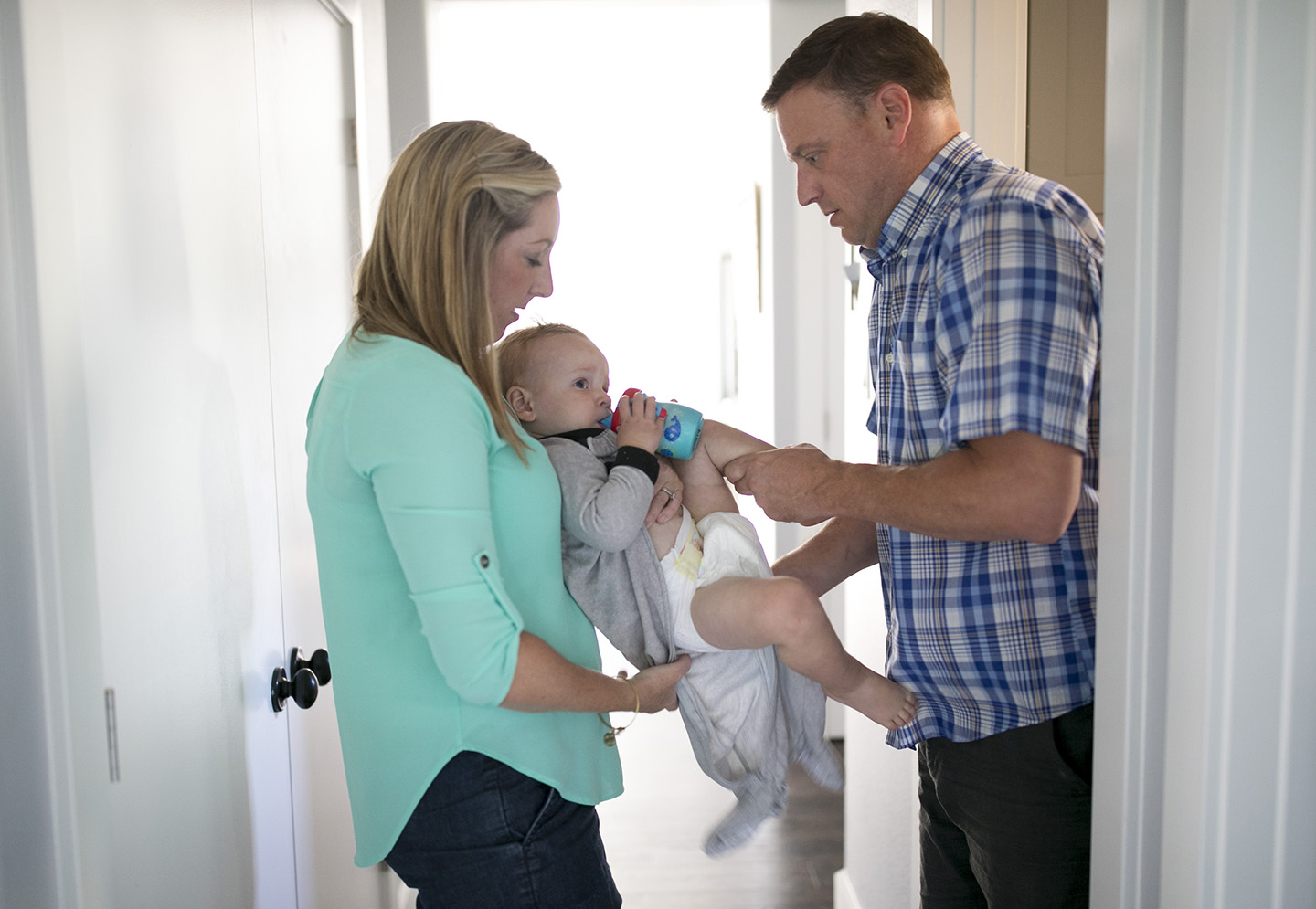
A hot door
Five months after her son was born in 2016, Jenny McGivney was ready to go back to work as a part-time dental hygienist.
She and her husband didn’t want just a day care facility for Aiden. They also wanted a place that emphasized educational instruction and safety.
So the pair was thorough in their search. They did in-person visits to four centers and interviewed staff at all of them.
“It’s hard to screen as a first-time parent,” Jenny McGivney said. “You don’t quite know what you are looking for.”
But the McGivneys did know they were interested in reviewing certain criteria such as caregiver-to-child ratios.
The couple eventually settled on the Goddard School in Steiner Ranch on Austin’s western edge, a franchise of a national chain that got high marks on day care review web sites. Aiden began attending the child care center in the spring of 2017 for a couple of days a week.
On Oct. 17, 2017, Jenny McGivney dropped off Aiden at school. She planned to pick him up around 5:30 p.m., when she got off work.
At 4:55 p.m., Goddard owner Jennifer Burton called.
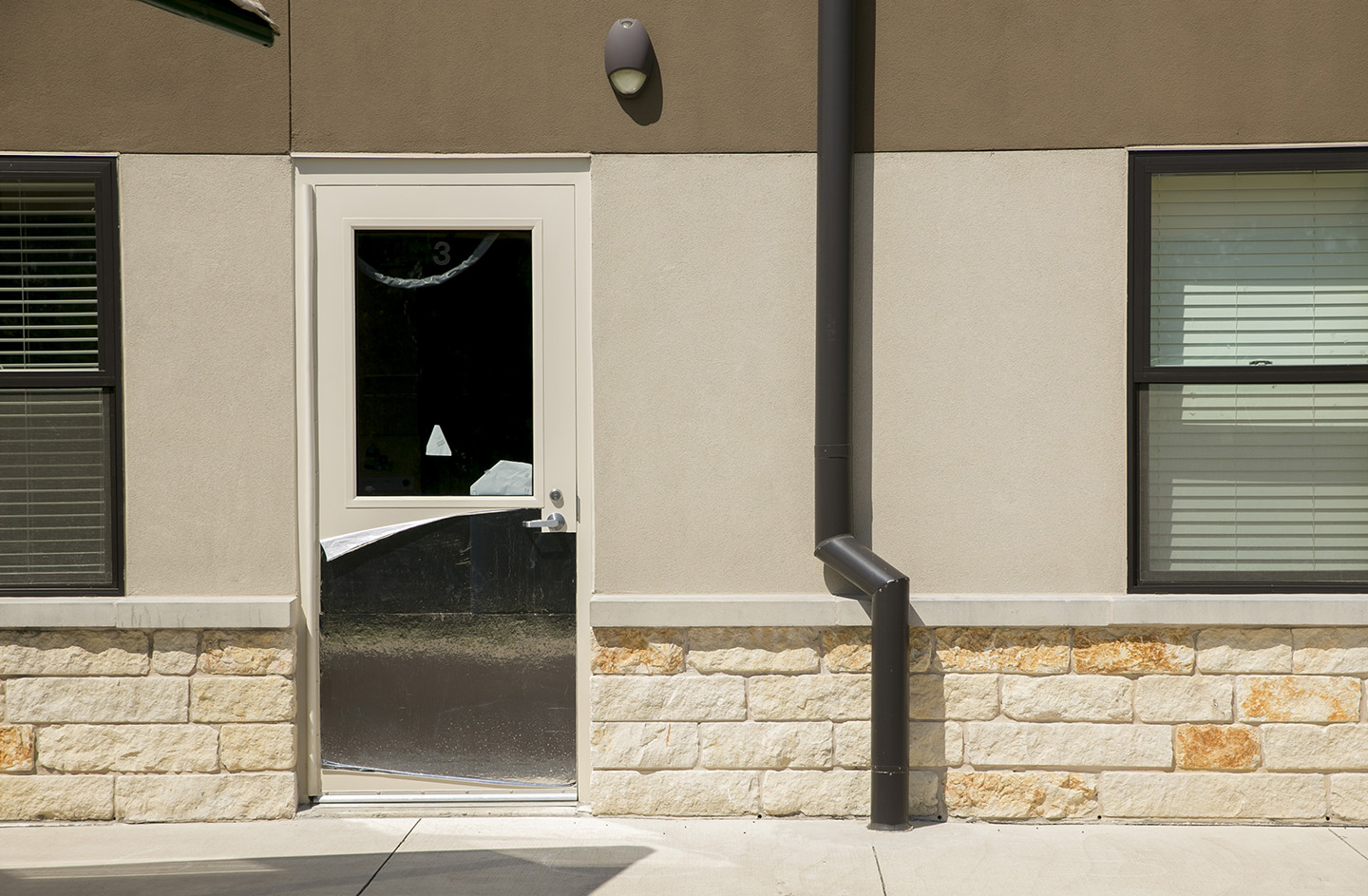
“I was just calling to let you know that Aiden had a little incident,” Burton said, according to an audio recording of the conversation.
She explained the children were coming inside from the playground and that Aiden had touched a hot door.
“Normally anytime anyone touches it, they pull their hands away, but he didn’t pull his hands away,” she said. “It looks painful and they have already blistered. We wanted to let you know. … He is still currently crying. It happened a few minutes ago.”
“I’ll be on my way,” McGivney said.
When she got there, Aiden was screaming in pain. Jenny scooped up her son and took him next door to a medical clinic where staffers advised her to go to a hospital emergency room.
Aiden was ultimately taken by ambulance to the University Hospital pediatric burn unit in San Antonio, where he has since gone through multiple surgeries to repair his hands.
“They put him to sleep and removed the layers of the dead skin and the blisters that were covering his hands and fingers,” McGivney said. “It was traumatizing for us, but we were more concerned for him.”
The state did not cite the day care center for neglect or abuse in Aiden’s injury, citing Goddard only for failing to keep the area free of hazards, meaning the hot door.
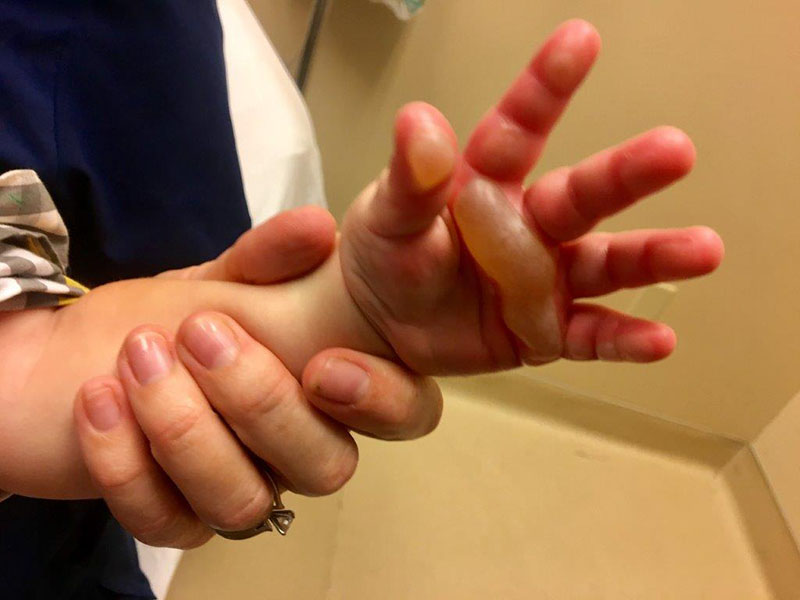
The McGivneys have sued the Goddard franchise where the incident happened and its corporate parent, claiming they were negligent in caring for the boy.
Goddard officials say they never knew the door was a problem, but during the course of the lawsuit D, the McGivneys’ lawyers obtained an email from a former Goddard teacher who wrote the owner “KNEW that those doors get extremely hot and has known about it and neglected to do anything about it for years.”
The McGivneys also said in their lawsuit that they had obtained information about a similar incident involving a hot door at a Goddard school in Carlsbad, Calif., eight months earlier in which a 1-year-old suffered second-degree burns. The suit claims Goddard promised the parents of that child “a nationwide solution and that Goddard would take every precaution necessary to make sure the children were in a safe environment.” However, the suit says the company did not deliver on that promise and warn Goddard properties across the country.
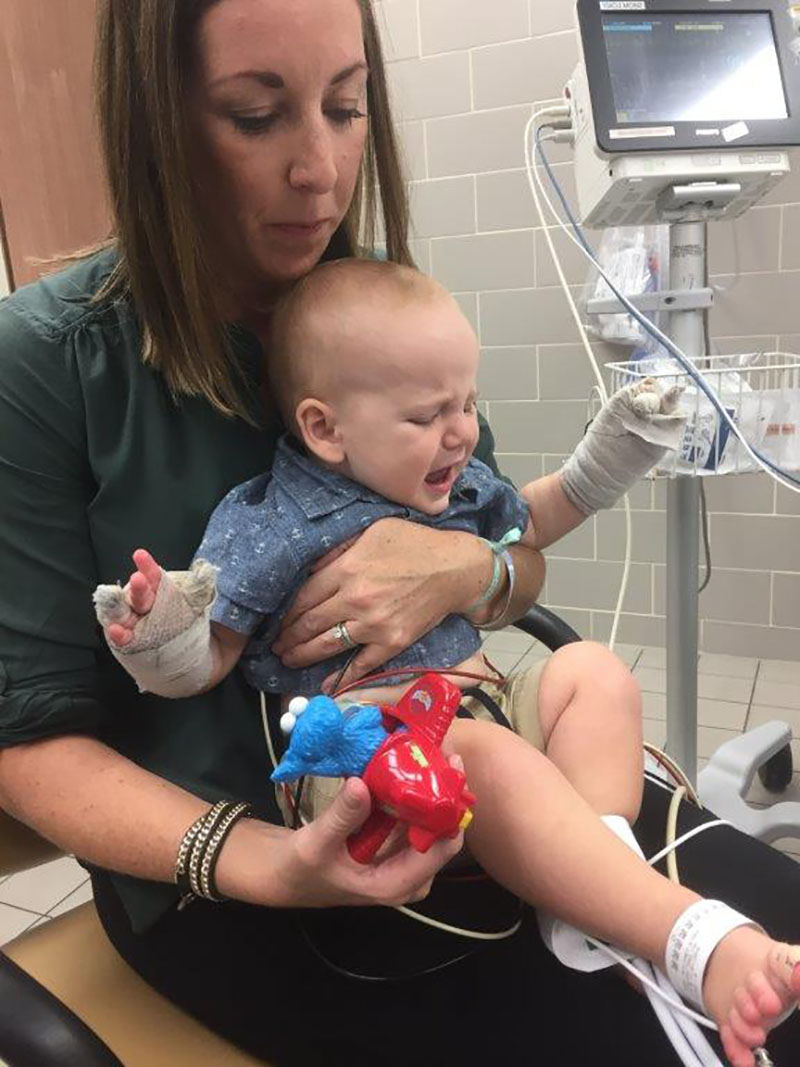
In a statement, an attorney for Goddard said the school’s “number one priority is the safety of its students. We are saddened that any child was injured while at the school. However, my client strongly denies the legal and factual claims made against it in the pending lawsuit, and we look forward to presenting our case in court.”
In November, Goddard and the McGivneys were in final settlement negotiations, the terms of which are confidential. However, the McGivneys have demanded that they include safety improvements that would prevent a similar incident.
Doctors do not know whether Aiden will have permanent scars. They tell the McGivneys it might take years to find out.
“We are praying he won’t even remember this,” she said.
Failing to report
In Texas, when a child receives an injury requiring medical attention, the caregiver is required to report it to both the state and the parents. But in 2016 and 2017, day care facilities failed to report the injuries to both parties at least 495 times, according to a Statesman analysis. When licensing inspectors discovered this, the child care operators submitted the data to the state.
At one Houston day care center, for example, a child fell while playing and broke his wrist, but the staff did not feel the injury was serious, state records read. Caregivers did not tell the parents, who only learned the extent of the injury when they took the child to the doctor.
The center was cited for the violation. The director then met with the center’s staff and reminded them that more serious injuries must be communicated to parents immediately.
In Mansfield, a caregiver left a 4-month-old baby on the floor while she stepped into the kitchen. While she was gone, two other children picked up, then dropped the baby, causing a small fracture to the skull. When confronted by state investigators, the caregiver said she knew she was supposed to complete a form for the state but she didn’t have a copy of the paperwork, so she didn’t fill one out.
Reporting such incidents is critical, not only for the parents but for state inspectors, who might see broader problems that need attention. Larry Elsner, executive director of Open Door Preschools, said he suspects child care centers that don’t report are simply trying to stay out of trouble.
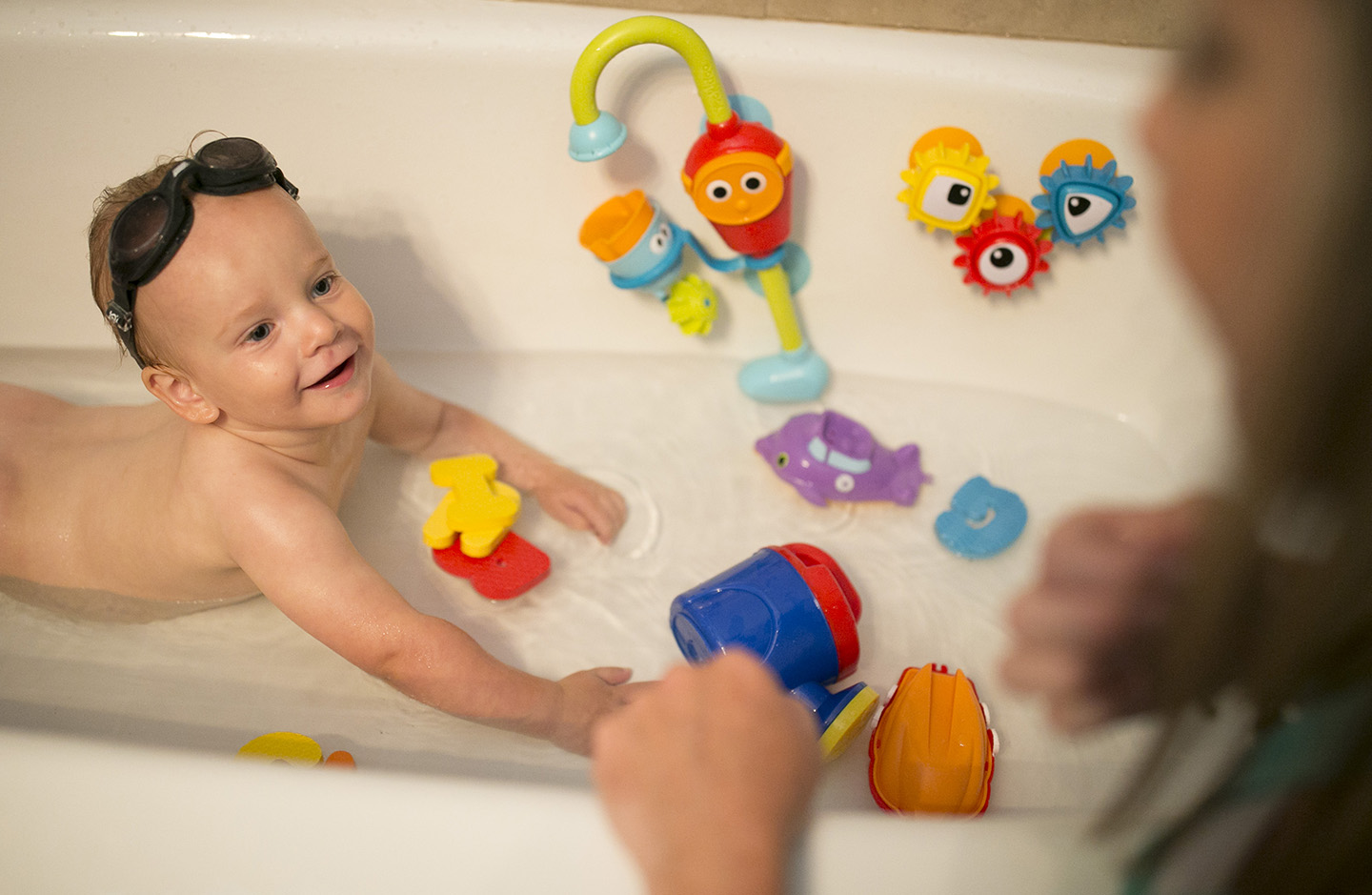
“It’s a system that’s pretty punitive so self-reporting is going to bring about an investigation,” Elsner said. “Certainly, if there was negligence, that’s going to come out. My guess is that some centers, they just sort of look at the odds and figure they’re better off to not report and hope nobody finds out.”
Yet there is no serious penalty for failing to report an injury. It is treated as any other violation and goes on the child care’s record but does not come with any extra monitoring or financial penalty, which critics say removes an incentive to come clean.
And some day care operations worry that too many violations make them look bad, which could lead them to hide injuries.
Michelle McCready with Child Care Aware of America says such failures to report could also stem from a lack of training or simple confusion.
“Sometimes (reporting) can be a little excessive, depending on the injury, but I come down on the side of better safe than sorry,” she said.
Some centers hide incidents because they don’t want the violation to be on their public record, for fear that parents will withdraw their child and cost the day care owner money, said Mike Daley, chair of the social work department at Texas A&M University-Central Texas. Others fear state regulators or don’t feel enough of a rapport with them to be honest.
Ideally, inspectors and caregivers have a relationship in which the state tries to help day care operations learn from their mistakes instead of just citing them. Jessica Collins, a state day care investigator who checks out allegations of abuse and neglect, said that educating people is a crucial part of her job. Although she might be called in under negative circumstances, she said, many people want to learn from the experience.
“We all have to be accountable for knowing our role and fulfilling it,” she said.
But experts say day care operators don’t always get that kind of attention, which can make a difference in terms of quality.
“It takes more time, but it helps people who are trying to act in good faith and not make them feel like ‘people are out to get me, and I have to be in terror every time they show up and sweep stuff under the rug,’” Daley said.
